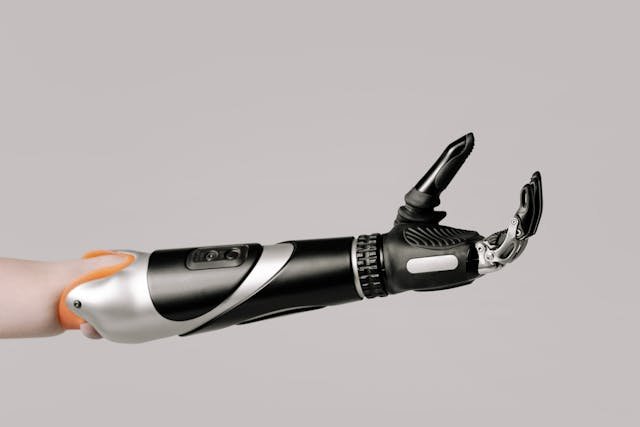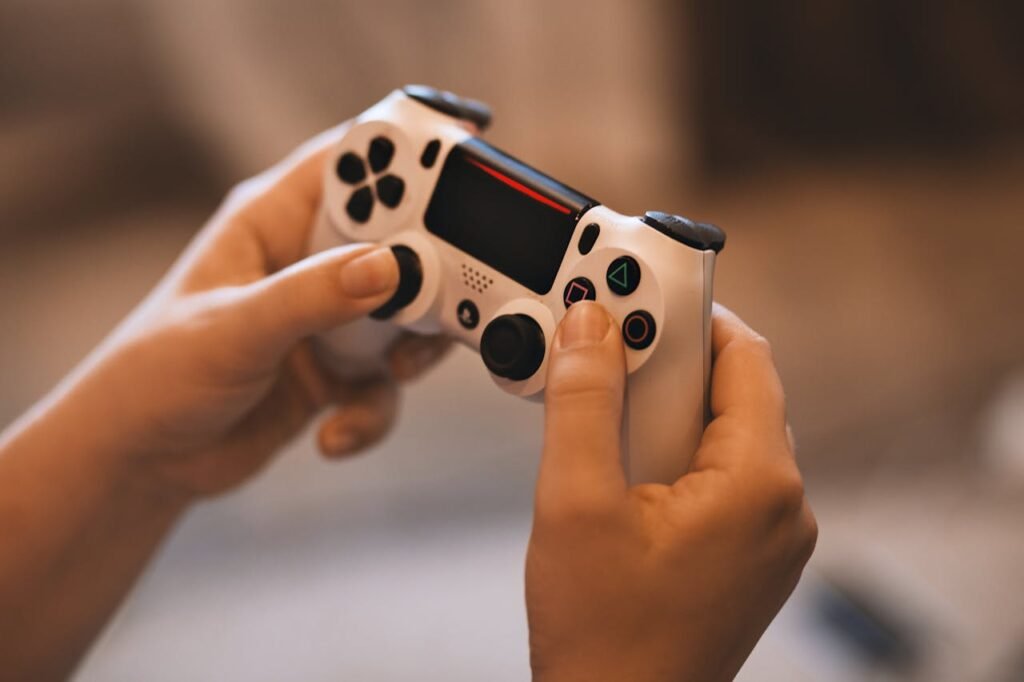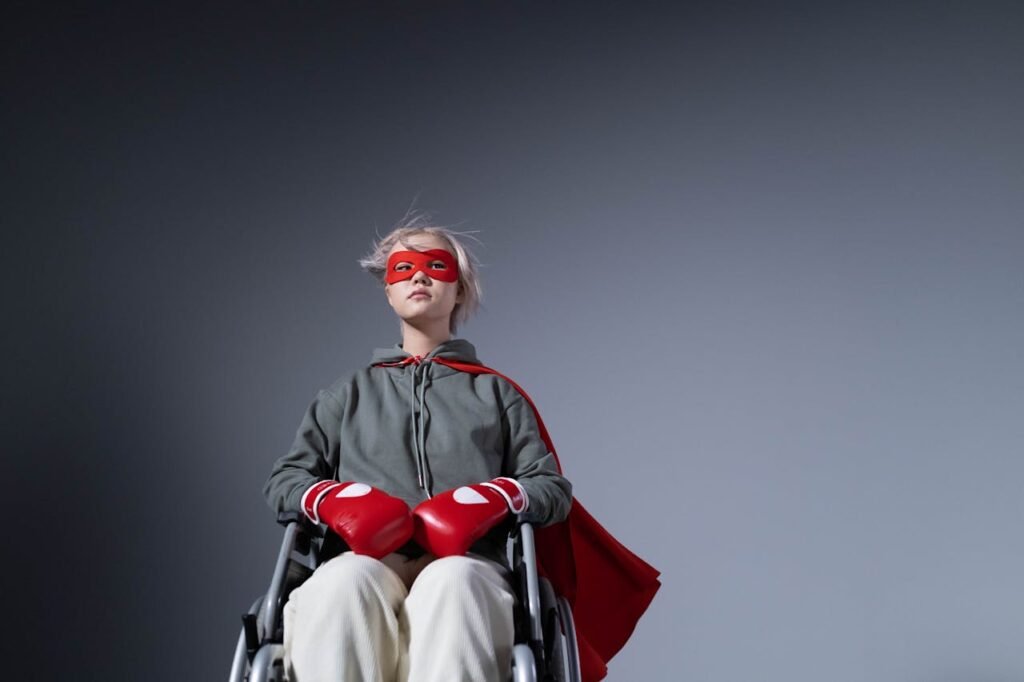Movies and TV shows have introduced many characters with prosthetic limbs, bionic arms, and robotic enhancements, shaping how people perceive prosthetic users in real life. Some of these portrayals have been thoughtful, accurate, and empowering, while others have been unrealistic, exaggerated, or even harmful to real-world prosthetic users.
When done correctly, these characters help normalize prosthetic use, showcase real challenges, and inspire people with disabilities. But when done wrong, they create false expectations, reinforce stereotypes, and mislead audiences about what prosthetics can actually do.
In this article, we explore famous characters with prosthetics—those that got it right and those that missed the mark.
Who Got It Right: Accurate and Empowering Prosthetic Characters
These characters respect real-life prosthetic users, showing that prosthetics are not just tools, but an extension of a person’s identity.
Bucky Barnes (Winter Soldier) – A Strong, Realistic Portrayal

Bucky Barnes, also known as the Winter Soldier from the Marvel Cinematic Universe (MCU), is one of the most well-known characters with a prosthetic limb. His bionic arm, given to him after a tragic accident, is a major part of his identity and combat skills.
Why This Portrayal Works:
- Emotional and Psychological Depth – Bucky’s character isn’t just about his bionic arm; his struggles with PTSD, self-acceptance, and identity loss make him a well-rounded, realistic portrayal of an amputee adjusting to prosthetic use. Many real-life prosthetic users experience emotional challenges, and Bucky’s journey acknowledges this in a meaningful way.
- Practical Adaptation to His Prosthetic – While his Wakandan-made arm is highly advanced, the films show that he has to adapt to it, train with it, and adjust to its power and limitations. This reflects real-world prosthetic technology, where users must learn how to use and control their prosthetics effectively.
- Prosthetics as a Tool, Not a Superpower – Though Bucky’s arm is stronger than a regular human limb, the movies don’t treat him as invincible. He still faces challenges, limitations, and vulnerabilities, making his journey more relatable to real amputees who use prosthetics.
Furiosa (Mad Max: Fury Road) – A Functional, No-Nonsense Prosthetic User
Furiosa, played by Charlize Theron in Mad Max: Fury Road, is one of the best female representations of a prosthetic user in film. She wears a mechanical arm that is purely functional, with no futuristic enhancements, no superpowers, and no magic fixes.
Why This Portrayal Works:
- No Over-Exaggeration of Prosthetic Abilities – Unlike many Hollywood films that make prosthetic users superhuman, Furiosa’s prosthetic is realistic and imperfect. It occasionally malfunctions, she adjusts it manually, and she compensates for it in combat—just like real-world users do.
- Prosthetics Integrated into Daily Life – Furiosa doesn’t let her missing limb define her or slow her down, but neither does the film ignore it. It’s simply part of her life and survival skills, which mirrors how real-life amputees learn to integrate prosthetics into their daily routine.
- Strong, Capable Character Beyond Her Disability – The movie never reduces Furiosa to just being “the woman with a prosthetic arm”. She is a leader, a fighter, and a strategist, proving that disability does not limit a person’s ability to be powerful and independent.
Dr. Otto Octavius (Spider-Man: No Way Home) – A Smart Use of Assistive Technology

Dr. Otto Octavius, better known as Doctor Octopus, may be a villain, but his mechanical prosthetic arms in Spider-Man: No Way Home provide an interesting look at AI-powered assistive technology.
Why This Portrayal Works:
- Exploration of AI-Integrated Prosthetics – His mechanical arms are not just extensions of his body—they are controlled by a neural link, much like modern brain-controlled prosthetics being developed today. This raises real-world ethical questions about AI-assisted prosthetic limbs.
- Challenges of Losing Control Over Assistive Tech – In the film, Otto loses control over his robotic limbs, showing the potential risks of AI-driven prosthetics if they are not designed with proper user safety measures. This is a relevant issue as modern prosthetic companies develop smart limbs with AI capabilities.
- Prosthetics as a Tool, Not a Crutch – Unlike many Hollywood portrayals, Otto’s mechanical arms do not define him. He is still a brilliant scientist and strategist, showing that a person’s identity goes beyond their disability or assistive devices.
Gazelle (Kingsman: The Secret Service) – Adaptive Combat with a Unique Twist
Gazelle, from Kingsman: The Secret Service, is one of the few female characters in action films who uses prosthetic limbs. Unlike traditional depictions, her prosthetics enhance her mobility and combat skills, making her a deadly and highly capable fighter.
Why This Portrayal Works:
- Prosthetics as Adaptive Tools, Not Superpowers – Gazelle’s bladed prosthetic legs allow her to fight effectively, but they don’t make her invincible or unrealistic. They are portrayed as functional extensions of her body, much like real-life adaptive sports prosthetics used by Paralympians and athletes.
- Showcasing the Potential of Prosthetic Innovation – While exaggerated for entertainment, Gazelle’s character hints at the real-world potential of advanced prosthetics. Blade runners (athletes using prosthetic running blades) demonstrate how modern technology enhances mobility and performance, just like her character does in combat.
- Confidence and Strength Beyond Disability – The film does not reduce Gazelle to a tragic figure or someone who needs to “overcome” her disability. Instead, she is portrayed as strong, confident, and in control, a refreshing departure from traditional disability narratives.
Cherry (Fallout: New Vegas) – A Survivor in a Post-Apocalyptic World

The Fallout video game series is known for its detailed world-building and character depth, and Cherry, from Fallout: New Vegas, is a rare but well-executed representation of a prosthetic user in gaming.
Why This Portrayal Works:
- Realistic Prosthetic Functionality – Cherry’s prosthetic leg reflects real-world mobility challenges, requiring her to adjust how she moves and navigates terrain in the game. Unlike many action-based games where prosthetics are ignored or treated as cosmetic additions, her condition affects gameplay in meaningful ways.
- Inclusion in Everyday Life – Cherry is not defined by her prosthetic limb. She is part of a larger world with relationships, goals, and struggles, much like real-life prosthetic users who integrate their mobility solutions into daily activities.
- A Non-Glamorized, Survival-Focused Portrayal – In a post-apocalyptic setting, Cherry’s prosthetic is functional, not flashy. This represents a realistic approach to disability in survival situations, emphasizing adaptability and resilience rather than unnecessary dramatization.
Alex Murphy (RoboCop) – A Thoughtful Exploration of Cyborg Prosthetics
Alex Murphy, the protagonist of RoboCop, is one of the earliest examples of a character whose entire body is replaced with cybernetic prosthetics. Though his transformation is extreme, the film explores thought-provoking themes about identity, body autonomy, and the ethics of assistive technology.
Why This Portrayal Works:
- Addressing the Psychological Impact of Prosthetics – Unlike many action films that simply focus on strength and enhancements, RoboCop dives into the emotional and psychological consequences of relying on prosthetics and cybernetics. Murphy struggles with his identity, memories, and loss of autonomy, which mirrors real-life challenges faced by prosthetic users adjusting to life with assistive technology.
- A Reflection of Real-World Bionic Development – The concept of full-body prosthetic replacement is still science fiction, but RoboCop presents an early vision of brain-machine interfaces and AI-powered prosthetics, concepts that modern medical technology is actively researching.
- Prosthetics as a Double-Edged Sword – The film raises critical questions about ethics in prosthetic development. While Murphy’s body is stronger than before, he also loses personal agency, highlighting the importance of human control in assistive technology.
Who Didn’t Get It Right: Unrealistic and Harmful Portrayals
These characters fail to represent prosthetic users accurately, either by over-exaggerating abilities or treating prosthetic use as a personality trait.
Captain Hook (Peter Pan) – The Problem with Villainizing Disability

Captain Hook, the infamous villain from Peter Pan, has a hook for a hand, but his character is a classic example of how Hollywood has historically villainized disability.
Why This Portrayal Fails:
- Associating Prosthetics with Evil – Hook’s missing hand is directly linked to his villainous nature, reinforcing the harmful stereotype that disabled characters are dangerous or bitter because of their condition.
- Lack of Realism in Prosthetic Use – Unlike realistic depictions like Bucky Barnes or Furiosa, Hook’s prosthetic hand is never treated as something he actively manages or adapts to. Instead, it is simply a weapon, ignoring the realities of prosthetic function and maintenance.
- Over-the-Top, Cartoonish Stereotypes – His character relies on exaggeration and mockery, rather than showing a nuanced experience of limb loss. This reinforces negative assumptions about disabled individuals, making them seem either angry, incompetent, or threatening.
Dr. Curt Connors (The Lizard – The Amazing Spider-Man)
Dr. Curt Connors, from The Amazing Spider-Man (2012), is a scientist who loses his arm and turns into a villain because of his desperation to regrow it.
Why This Portrayal Fails:
- Treating Disability as a Flaw to Be “Fixed” – The movie implies that living with a missing limb is unbearable, pushing Connors to experiment on himself and mutate into a monster. This sends a harmful message—that prosthetic users are somehow “incomplete” without their lost limb.
- Missed Opportunity for Assistive Tech Representation – Instead of exploring advanced prosthetic technology, the film chooses an unrealistic, science-fiction approach where he seeks biological regeneration, ignoring the real-world solutions available for limb loss.
- Reinforcing the “Bitter Disabled Person” Trope – Like Captain Hook, Connors’ disability is portrayed as something that makes him angry, unstable, and desperate. This misrepresents the resilience and adaptability of real-life amputees.
Nathan Summers (Cable) – The “Cybernetic Superhuman” Trope

Cable, from Deadpool 2, is a time-traveling mutant with a cybernetic arm, portrayed as being significantly stronger and more durable than a human limb.
Why This Portrayal Fails:
- Exaggerating Prosthetic Capabilities – Cable’s mechanical arm functions like an unstoppable weapon, making it far more powerful than real-world prosthetics. While modern bionic limbs offer impressive strength and dexterity, they still require training, battery power, and maintenance—none of which are reflected in Cable’s design.
- No Adaptation or Learning Curve – Unlike realistic prosthetic users who spend time learning to use their assistive devices, Cable’s arm seems to work effortlessly from the moment he appears on screen, failing to reflect the real-life process of adaptation and rehabilitation.
- Perpetuating the Cyborg Warrior Stereotype – While entertaining, Cable’s portrayal feeds into the overused “cyborg warrior” trope, which often misleads audiences into thinking prosthetic limbs provide superhuman abilities rather than functional assistance.
Edward Elric (Fullmetal Alchemist) – The “Magic Prosthetic” Cliché
In the anime Fullmetal Alchemist, Edward Elric loses an arm and a leg, replacing them with automail, a highly advanced mechanical prosthetic system that functions identically to natural limbs.
Why This Portrayal Fails:
- Ignoring Real Prosthetic Limitations – Edward’s automail works without any visible maintenance, adjustments, or power source, which is completely unrealistic. Real prosthetics require battery power, recalibration, and constant care to function properly.
- No Physical or Functional Adjustments – Unlike real amputees who modify movement, posture, and balance to adjust to their prosthetics, Edward moves and fights exactly as he did before losing his limbs, which dismisses the real physical adaptations necessary for prosthetic users.
- Reinforcing the Idea That “Real” Limbs Are Superior – In the story, Edward’s goal is to regain his original limbs through magic, sending the message that prosthetics are just a temporary fix, rather than a viable and empowering solution—a mindset that many prosthetic users fight against in real life.
The Future of Prosthetic Representation in Media
As technology advances and disability representation in media improves, the way prosthetic users are portrayed must evolve as well. Hollywood, gaming studios, and TV producers have an opportunity to break stereotypes, educate audiences, and inspire real-world innovation in prosthetics.
By looking at both successful and flawed representations, it’s clear that accuracy, inclusivity, and depth are crucial for creating meaningful prosthetic characters.
1. The Need for More Disabled Actors in Prosthetic Roles

One of the biggest issues with prosthetic representation is that most characters with limb loss are played by able-bodied actors. While Hollywood has started casting authentic performers for disability-focused roles, prosthetic users deserve more opportunities in mainstream films.
How the Industry Can Improve:
- Hire actors with real-life prosthetics to ensure authenticity and proper movement representation.
- Train directors and writers on prosthetic adaptation, so they can tell realistic stories without relying on outdated tropes.
- Support emerging disabled filmmakers, giving them platforms to create genuine, meaningful narratives from lived experiences.
Films like A Quiet Place Part II successfully cast Millicent Simmonds, a deaf actress, proving that disability representation is more powerful when real disabled actors are involved. The same standard should apply to prosthetic users in entertainment.
2. Balancing Sci-Fi Innovation with Realistic Challenges
It’s exciting to imagine advanced bionic limbs, cybernetic implants, and AI-driven prosthetics, but media needs to balance innovation with reality. While movies like RoboCop and Cable (Deadpool 2) present futuristic prosthetics, they often ignore real challenges like training, maintenance, and physical adaptation.
How the Industry Can Improve:
- Feature prosthetic users learning to use their devices, just as real amputees go through rehabilitation and training.
- Acknowledge maintenance and limitations, such as power supply issues, weight balancing, and material durability.
- Showcase real-world assistive technology in a way that educates audiences, rather than presenting prosthetics as instant solutions.
By doing this, media can inspire real-world prosthetic advancements while ensuring representation remains grounded in reality.
3. Expanding Disability Representation Across Genres
Currently, prosthetic characters are most common in action, sci-fi, and war films, where limb loss is associated with battle wounds, superhuman enhancements, or tragic backstories. However, prosthetic users exist in all walks of life, and media should reflect that.
How the Industry Can Improve:
- Create prosthetic-using protagonists in romance, comedy, drama, and slice-of-life films, showing that disability is not always linked to war or tragedy.
- Introduce diverse prosthetic characters in children’s media, teaching young audiences about inclusion and assistive technology.
- Highlight workplace and social challenges, showing how prosthetic users navigate daily life, relationships, and careers.
By integrating prosthetic users into every genre, media can help normalize disability and promote greater societal acceptance.
4. Encouraging Collaboration Between Filmmakers and Prosthetic Experts
Many inaccurate prosthetic portrayals happen because filmmakers don’t consult real-life experts. Prosthetists, engineers, and disabled individuals should be part of the creative process to ensure characters are realistic, functional, and relatable.
How the Industry Can Improve:
- Involve prosthetists in scriptwriting and set design, ensuring prosthetics are designed accurately.
- Partner with real amputees for motion capture, so movement mimics real-world prosthetic use.
- Collaborate with prosthetic companies like Robobionics, showcasing real innovations and user experiences in entertainment.
With proper research and collaboration, filmmakers can create prosthetic characters that inspire real-world advancements.
Final Thoughts: Why Accurate Prosthetic Representation Matters
The way prosthetic users are portrayed in media has a direct impact on how society perceives disability. When done right, it inspires, normalizes, and educates. When done wrong, it creates unrealistic expectations and reinforces harmful stereotypes.
At Robobionics, we believe that prosthetic users are more than their disability—they are innovators, athletes, leaders, and heroes. Media should reflect that reality, ensuring that prosthetic characters are complex, capable, and respected.
The future of prosthetic representation must focus on realism, inclusivity, and breaking outdated stereotypes—because everyone deserves to see themselves represented accurately and positively.



